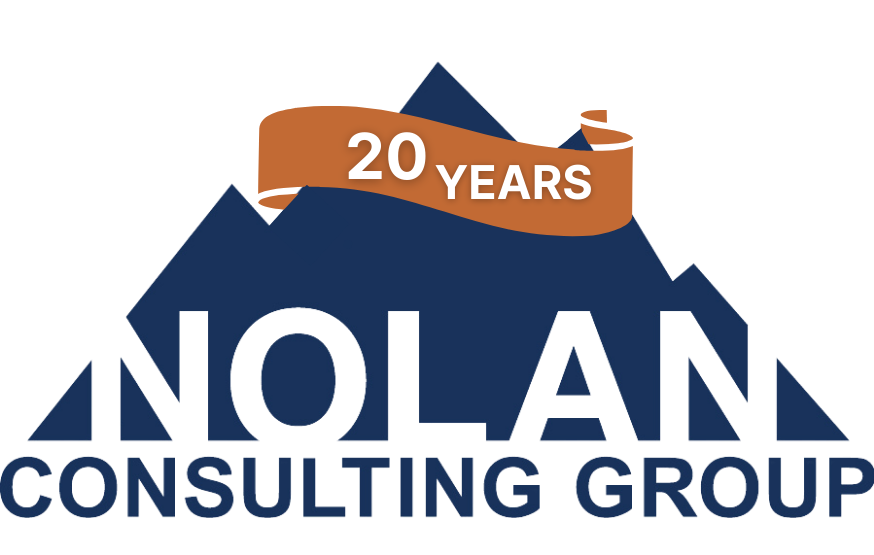Documents & Tools
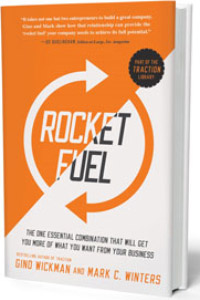
Rocket Fuel by Geno Wickman and Mark Winter
Rocket Fuel does a deep dive into two roles in a business: Visionary and Integrator. This powerful combination is not only necessary for growth, but may be a necessity for a small business owner’s balance and happiness.
The Visionary (you), the idea person and ultimate motivator, got your business started. The Visionary defines the culture. It’s the person looking more than a month out. We often start a business and then get caught up in the hour glass, where we become the chief doers of the business. Every now and then we get our head out of the sand and try to remember what we were attempting to accomplish. If we’re playing both roles, the idea person and the doer, we stunt our growth, the growth of the company and become frustrated.
The Integrator isn’t necessarily the main doer. They’re the main manager and influencer, the one that connects the dots to the Vision. The Visionary is concerned with the what. The Integrator is focused on the how. The Integrator moves a team to action. They structure the path forward.
The combination of the creative and passionate (Visionary) with the detailed implementor (Integrator) is “Rocket Fuel”. Suggesting that now you are scalable, the Integrator listens to the Visionary and builds out webs or plans for achievement. Many great companies have both.
Often the Integrator is the silent one behind the stage. The Visionary is the public face. The Integrator is your #2, your go-to person. Do you have a #2? How much responsibility do you give them?
The problem is that many business owners don’t want to give up control.
There are many applications that contractors can take away from this book. For example, my brother Kevin Nolan, owner of Nolan Painting, has two Integrators: his CFO and his Human Resources Director. They implement his ideas, be it new training programs, benefit programs, pay for performance, opening new markets, new recruiting ideas and implementing new systems. Kevin paints the picture and they integrate the ideas into the company. Kevin reinforces it with his energy, praise, and constant focus, never changing directions.
Many small business owners have great ideas, that they can’t implement. An example of this is training programs. You want (and need) a training program, but it won’t stick. The absence of a training program in today’s labor market will prevent you from bringing in great people and training them to become capable craftsmen.
Often, I see the head of the office as the Integrator. This could be the Office Manager or VP of Operations. It could be the Finance Manager, or HR person. The person must be able to influence others.
The Visionary/Integrator relationship is critical. Almost like Radar O’Reilly and Colonel Potter (from the television show: MASH), the Integrator can read the Visionary’s mind.
The Integrator:
• protects the culture
• communicates the details
• follows up on the details
• is a sounding board
• runs organized meetings.
• is loyal: would take a bullet for you
• manages up; takes things from you
• keeps the company on track with the planning process:
• 90-day Plan priorities
• Budget
• Clarity of roles
Never stop looking for your Integrator, when you find yours, it’s ROCKET FUEL!
-Brian Nolan
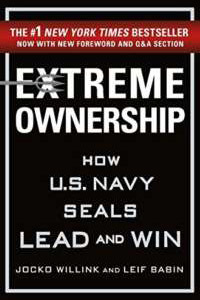
Extreme Ownership by Jocko Willink and Leif Babin
Reading this book crystalized that leadership is a valuable quality in any arena. Heads of State, CEO’s, business owners, both large and small, department heads, coaches of teams, team captains, the list is limitless, all must have leadership qualities.
Navy SEALs, Jocko Willink and Leif Babin, took their leadership skills to battle and have shared their stories and lessons. The book is a raw, reflective and vulnerable look at the skills needed to move forward, take responsibility, learn from losses and to recognize what went right.
Kevin Nolan, at Nolan Painting, has taken the concept of ideal team size and leading up and down the chain of command from the book and applied it to his organizational chart and how information is shared all throughout Nolan Painting. Everyone at Nolan Painting, from the CEO to the team in the field is assigned on the organizational chart. This organizational chart allows for small teams in the field with concentrated leadership to be nimble and creates a cascading level of communication up and down the organizational structure. The idea of cascading information flow empowers the team and engenders empowerment. The quality of feedback and ability to solve problems quickly has increased due to this implementation.
The main leadership skills discussed, as first learned in combat and then applied to the business world:
#1 — Leaders don’t blame the team for mistakes/failure.
#2 — Leaders instill belief in winning in the team members, one-and-all.
#3 — Leaders take the most difficult job on the boat.
#4 — Leaders prioritize and execute. Move to next priority and execute. Single initiative.
#5 — Leaders make sure the plan is shared up and down the organization chart.
#6 — A good leader has nothing to prove, but everything to prove. (Willinick & Babin)
These leadership skills, that were battle-hardened, are shared in this book. Businesses of any size will benefit from the attitudes and values that SEAL teams train and embrace to build a team and achieve the business vision.
All the best,
-Chris Adams
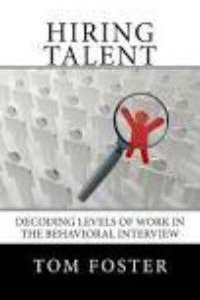
Hiring Talent by Tom Foster
All that are involved in hiring, training, and leading a team sometimes wonder why a particular person may not fit in role or be able perform beyond a certain capability. Instead of being frustrated by this, read Hiring Talent by Tom Foster. Success depends on hiring candidates and promoting existing team members that will blossom in your organization. Tom Foster takes the levels of work research by Elliot Jaques and applies an interview process.
The book Hiring Talent starts at the interview process and offers guidelines on how the process should be conducted. Foster’s book, besides providing the tools necessary for the hiring and selection process, talks about time span and levels of work. This is the most interesting take away for me in this book. All roles in an organization have a level of decision making. If a decision is not clear based on the situation, a level of problem solving is needed. This thinking not only applies to fresh talent but of what we are asking of our team.
Time span thinking helps in two ways. The first is in hiring and the second is in promoting. Although the book relies heavily on the interview process, the idea of “time span” thinking resonates throughout all levels of an organization. As you make your way through the book you will see why some new hires or team members struggle.
There are five levels of work:
Level 5: 5-10 years
Level 4: 2-5 years
Level 3: 1-2 years
Level 2: 3-12 months
Level 1: 1 day-3 months
Are new hires or team members failing because the right questions were not asked in the interview process or is a team member not able to think beyond a particular scope. When one thinks in terms of time span and team members it becomes clear that some levels of work require different scopes of thinking. For instance, a leader or manager is strategizing beyond a particular job (level 2 or 3), a trades person is focusing on the job in front of them (level 1) and an owner or CEO is thinking about where the business is going (level4 or 5). Another topic the book shares is the interview process. When interviewing a candidate ask specific behavioral related question related to experience. To often we ask a question starting with “how would you?”. This gives the candidate carte blanche to make up any answer.
We need to ask those questions starting with “how did you?”, “tell me about a time”, “explain to me how often you met with your leadership, or they met with you”. These types situational questions elicit responses that give insight on the candidate’s ability to share real answers, and gives insights on the supervisory needs or time span responsibilities a candidate had in their particular role.
Do not be frustrated by the performance of an existing team member, reflect on what level of work you are requiring of them and lead and train from there. As you bring on new staff, for a particular role, identify the role and responsibilities and frame your interview process to see where that candidates ‘time span” lands. Hiring Talent gives you the tools and insight to prepare your team of the future.
By Chris Adams
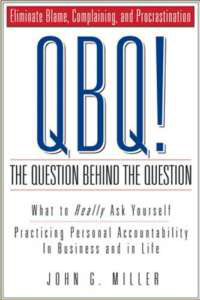
Question Behind the Question
QBQ- When you're frustrated with someone or something and you think why is this happening to me? Step back and ask The Question Before the Question. What can I do about it? Or How can I affect a positive outcome. QBQ helps us understand the dynamics of Personal Accountability and Action.
- Kevin Nolan, Partner, Nolan Consulting Group, Inc
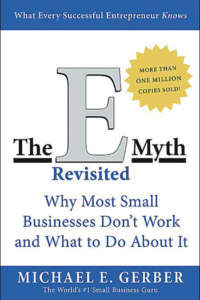
The Entrepreneurial Myth (E-Myth)
E-Myth- Business is about systems. People run the systems the systems runs the business. There are so many great concepts in the E_Myth: "Work on your business not in it," "Quantify, Orchestrate, Innovate," "Once a week have a meeting about the rules of the game," that it is impossible to describe the book in a few words. The ideas are common sense and yet the book requires multiple reads.
- Kevin Nolan
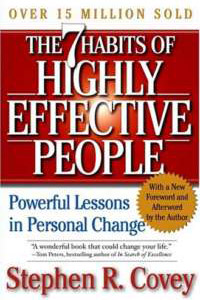
7 Habits
I have to believe that the 7 Habits is one of the most influential business books every written. Covey uncovers concepts deeply integral to life fulfillment and lasting joy. LIfe without them is a life less lived.
- Andrew Amrhein, Business Coach, Nolan Consulting Group, Inc
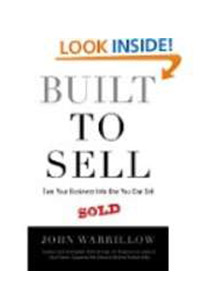
Do You Want to Sell your Business Someday?
Built To Sell by John Warrillow is a must read for any small business owner who wants to have an exit strategy. Whether you want to sell your business or not, if you follow the authors strategy, you'll have the freedom to sell it or receive a salary well into your retirement. The book is written in a fable / story format. You'll follow the owner of an advertising agency through his discovery of what business systems he needed to put in place and the methods he used to make the busines less dependent on him, the owner. Some other tips:
- specialize: focus on a standard service offering
- Hire sales people and build a sales machine
- Build a management team and launch a long term incentive plan for them
- Create an operations manual
- Make sure no one customer is equal to more than 15% of your revenue.
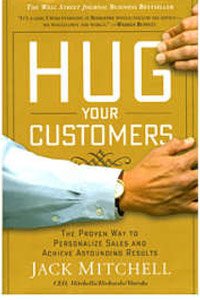
Hug Your Customers
I would highly recommend reading the book, "Hug Your Customers." It has great ideas on how we can create an environment of individuals who are team players and help YOU run a successful business by loving customers. Most of the things mentioned in the book are things we are probably already doing or are very easy to begin.
The author, Jack Mitchell, is the CEO of clothing company on the east coast. The book is an easy read and filled with story after story of ways we can care for the people around us and build a customer for life.
- David Chism, A David Creation
I just read this book as well. A "hug" is when you exceed customer expectations. It's why you can charge more money for your services. It's doing the unexpected. It's how you keep customers for life.
It's not about the paint job, it's about caring for the customer ... thinking from the customer's point of reference.
- Brian Nolan, President, Nolan Consulting Group, Inc
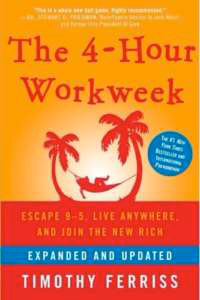
The 4-Hour Workweek Book Review
I reviewed the first edition of The Four Hour Workweek and was surprised by the content, it was a fresh look at a new idea (Lifestyle Design) and it offered some really practical, useful advice that virtually anyone could implement. I recommended the book to many people - most liked it, some didn't.
I eagerly pre-ordered this version of the book when I first heard about it mostly because I was curious if it would really be better . . . and boy was it! I sat down with this book and read until the wee hours of the morning. Sure a lot of the material is the same, but there are around 100 new pages of material and that material is what the first edition desperately needed. The new material is solid examples, case studies, new resources and it addresses how to navigate lifestyle design in a rapidly changing economy.
Tim includes a list of things learned in 2008 along with lessons learned, this section of the book was priceless. Here are a few of the things he talks about:
1. Don't accept large or costly favors from strangers - Exceptions, uber-successful mentors who are making introductions and not laboring on your behalf.
2. You don't have to recoup losses the same way you lose them - An interesting discussion of mortgages.
3. One of the most universal causes of self-doubt and depression: Trying to impress people you don't like (This one really hit home with me . . . hard)
4. Slow meals = life
5. Money doesn't change you; it reveals who you are when you no longer have to be nice.
6. It doesn't matter how many people don't get it. What matters is how many people do.
7. I should not invest in public stocks where I cannot influence outcome (Another hearty agreement from me).
The list goes on as does the new information in the book. This one is a must read for anyone who wants to break the slave-save-retire cycle and live on purpose now.
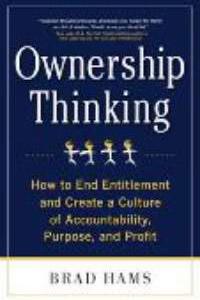
Ownership Thinking by Brad Hams
There are a handful of business books I’ve read over the years that have made a tremendous impact on how I lead and coach. These have included The E-Myth Revisited, First Break All the Rules, Built to Sell and How Full is Your Bucket, among others. A new one has made the List: Ownership Thinking, by Brad Hams. It's a must read for business owners. This 227 page book is easy to read and includes material you can immediately implement in your business.
Here are some of the key points from the book:
• How to change your culture from entitlement thinking to an earnings mentality
• The most important financial indicators to track
• How to read financial statements and communicate financials to your team
• How to develop incentive plans for your employees that work
• The concept of “Rapid Improvement Plans”
Ownership Thinking drills down on: the right people, the right education, the right measures and the right incentives. The result is “sharing the insomnia,” so you’re not the only one caring about the results.
In Nolan Consulting Group, we often talk about looking through the front windshield (the ability to forecast), not just the review mirror (how we did). Brad actually uses this language. (I’m still waiting for the credit!)
He also includes a fantastic analogy for understanding financial statements. It’s actually the best finance book for non-finance people I’ve read. I was so excited I emailed my team many times throughout the read. Consider buying it today.
Enjoy the read,
Brian Nolan
